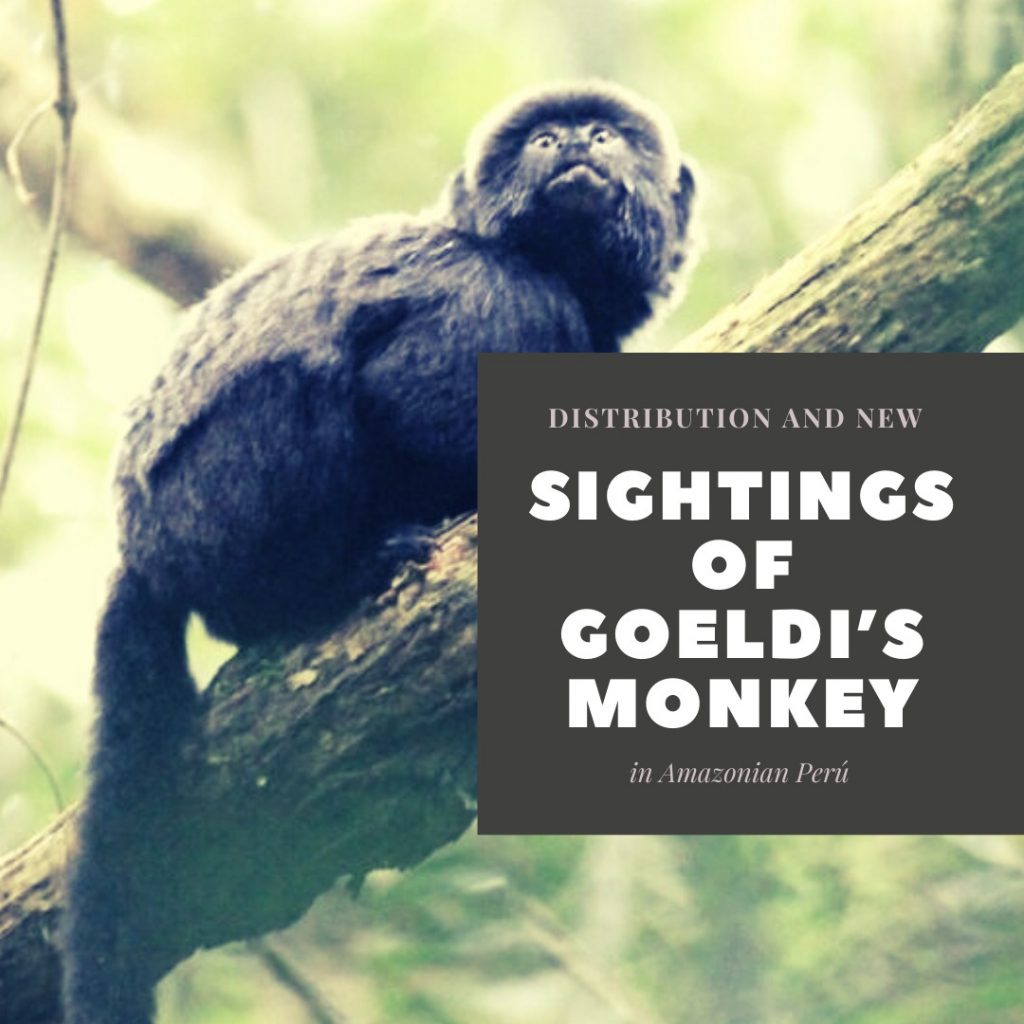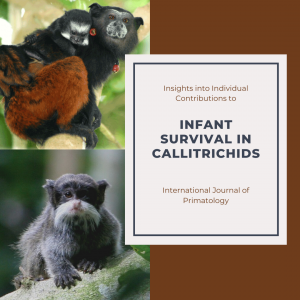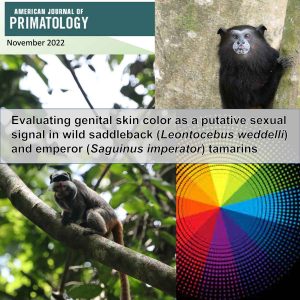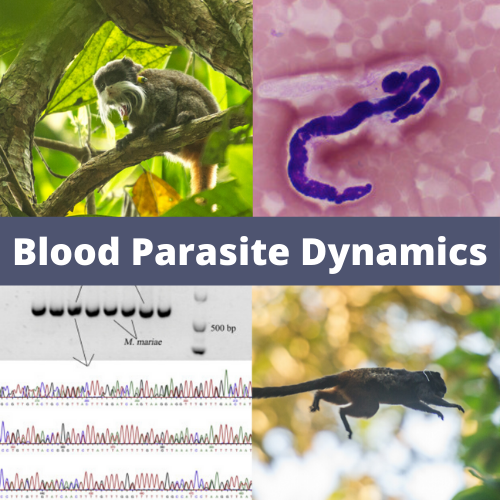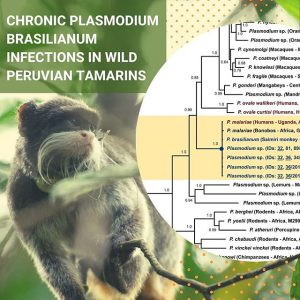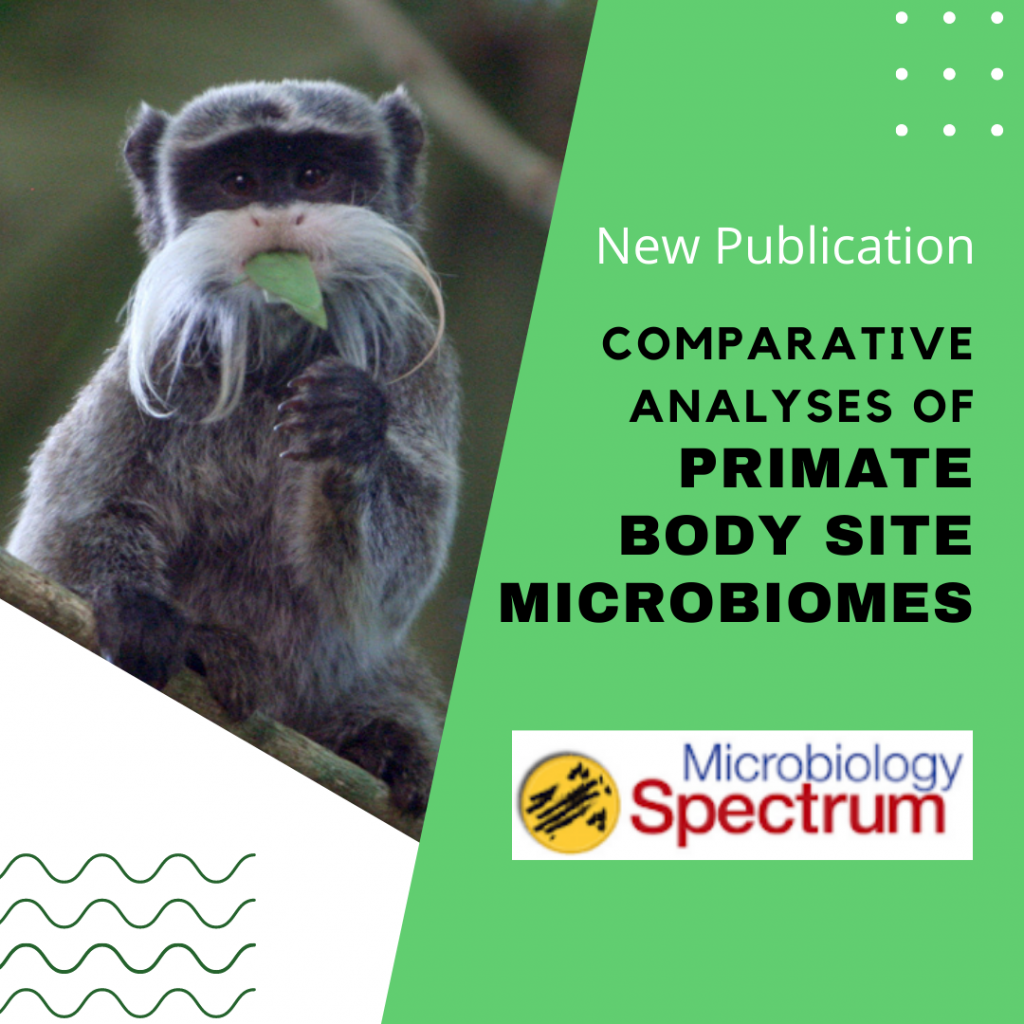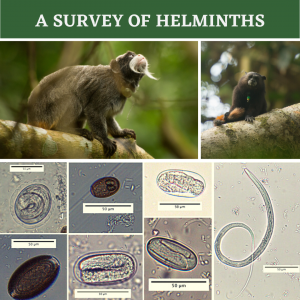Primate Ecology

Longterm Monitoring
Our research on nonhuman primates at the Los Amigos Biological Station began in 2009 with an emphasis on the reproductive biology of Callitrichids (the tamarins and marmosets). They are small and fast, and one must earn their trust to observe natural behavior up close. Via a careful annual mark-recapture program we study broad aspects of tamarin biology from known social groups and individuals. Additionally, we study population level phenomena from 9 other sympatric (co-occuring) species of primate through mix of mark-recapture and noninvasive sampling techniques.
Tamarins By The Numbers
What are Tamarins?
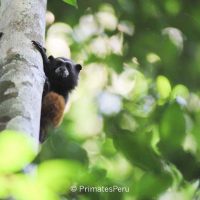
Tamarins are primates (family, Callitrichidae) known for their miniature stature and complex, female-dominant social systems.

They have hirsute faces and are very hard to distinguish from each other. No sexual dichromatism is present in the species’ pelage.
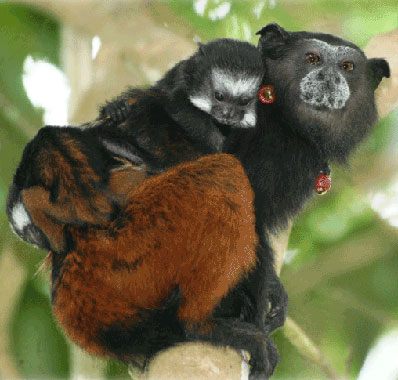
They produce twin offspring over 90% of the time. These dizygotic or fraternal twins are more closely related on average due to genetic chimerism
Meet the Tamarins at Los Amigos
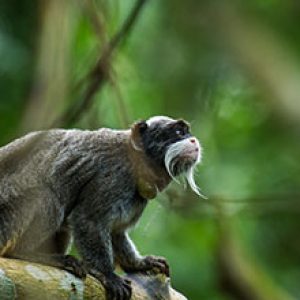
Emperor tamarins (Saguinus imperator), known for their fantastic mustaches, are also fierce creatures, despite their size.
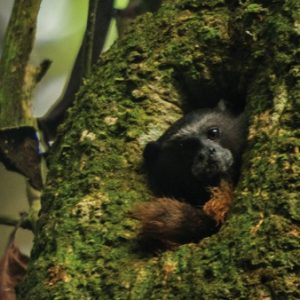
Saddleback tamarins (Leontocebus weddelli) are milder in temperament. They are the most widely ranging tamarin species in the Amazon.
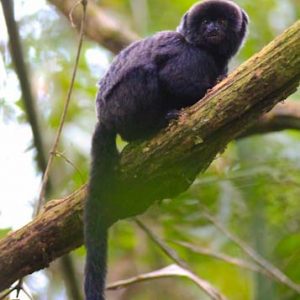
Goeldi’s monkey (Callimico goeldii) is a rare and cryptic primate occasionally observed at our site. They are larger, quieter, and fond of fungus.
The Other Primates
Microbiome Analysis
Using fecal samples collected non-invasively, we are performing short and long fragment 16S bacterial metabarcoding for a comparison of the gut microbiome across the entire primate community, including conspecifics from animal rescue centers in the same area.
Diet Characterization
With non-invasively collected fecal samples we are performing metabarcoding experiments of specific gene markers to characterize leaf, fruit, insect, and vertebrate food items across all co-occurring primates.
Movement Ecology
Using several tracking technologies for small-to-medium size primates we are remotely collecting movements of tamarins, titi monkeys, and capuchins. Movement of other species is extracted from primate follows with handheld GPS units.
Publications
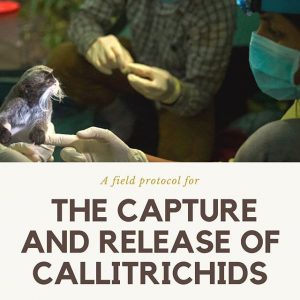
We published a protocol on safe mark-recapture techniques for callitrichids. Additional detailed protocols are available upon request.
Moreira, L. A., Watsa, M., Erkenswick, G., Higham, J. P., & Melin, A. D. Evaluating genital skin color as a putative sexual signal in wild saddleback (Leontocebus weddelli) and emperor (Saguinus imperator) tamarins. American Journal of Primatology, 2022. DOI: /10.1002/ajp.23456
Asangba, A.E., Mugisha, L., Rukundo, J., Lewis, R.J., Halajian, A., Cortés-Ortiz, L., . . . Stumpf, R.M. (2022). Large comparative analyses of primate body site microbiomes indicate that the oral microbiome is unique among all body sites and conserved among nonhuman primates. Microbiology Spectrum, 2022, DOI: 10.1128/spectrum.01643-21
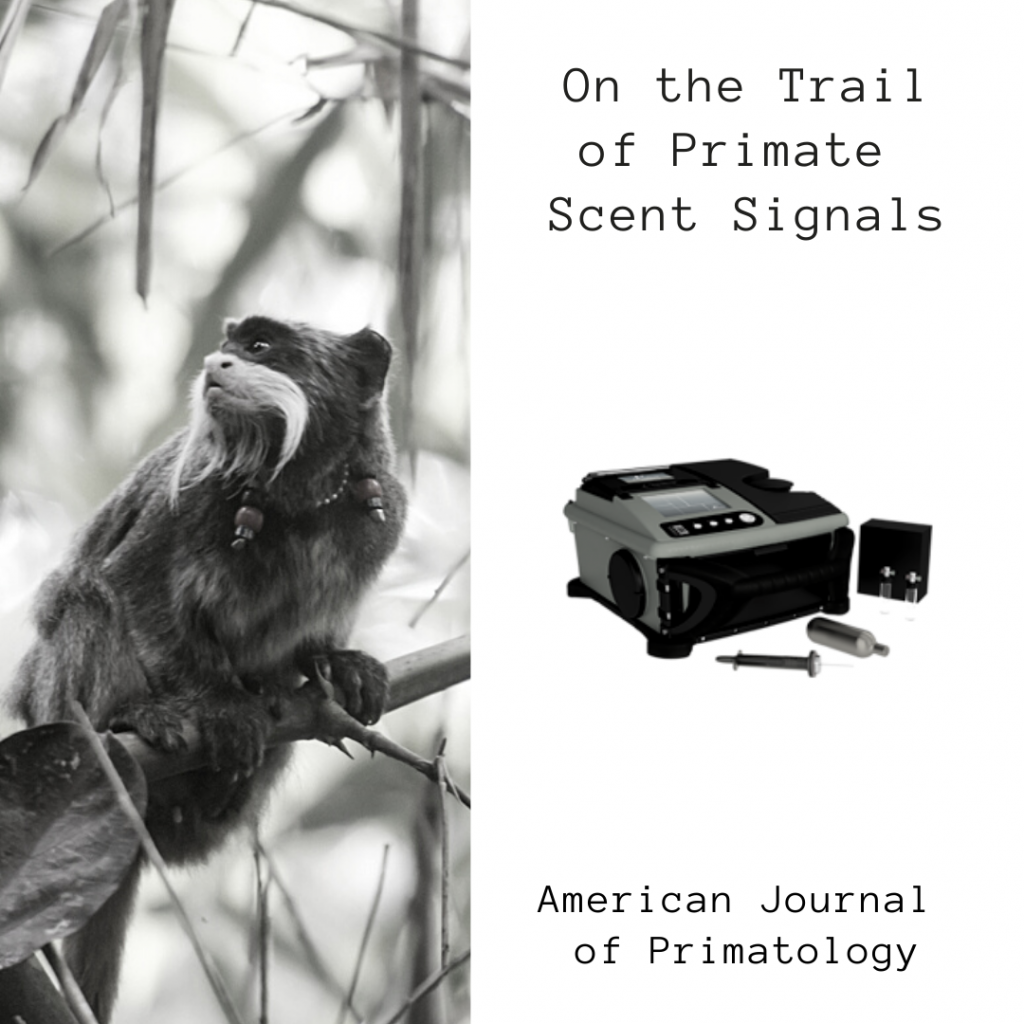
Poirier AC, Waterhouse JS, Watsa M, Erkenswick GA, Moreira LAA, Tang J, Dunn JC, Melin AD, Smith AC. (2021). On the trail of primate scent signals: A field analysis of callitrichid scent-gland secretions by portable gas chromatography-mass spectrometry. Am J Primatology. DOI: 10.1002/ajp.23236.
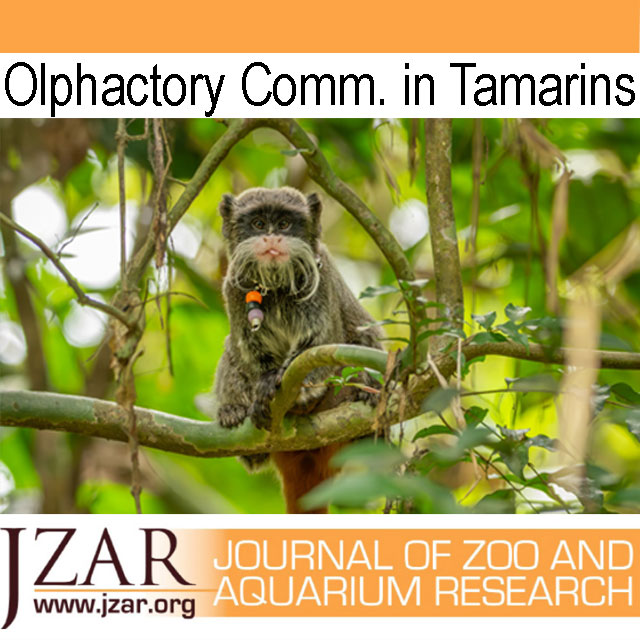
Poirier AC, Dunn JC, Watsa M, Erkenswick GA, Melin AD, Waterhouse JS, Smith AC (2023). Olfactory communication in tamarins: A comparative analysis of scents from wild and captive populations. Journal of Zoo and Aquarium Research.https://doi.org/10.19227/jzar.v11i1.652
Location: 443 Old Via Rancho, Escondido CA 92029
Phone: +1 (314) 649-8636
